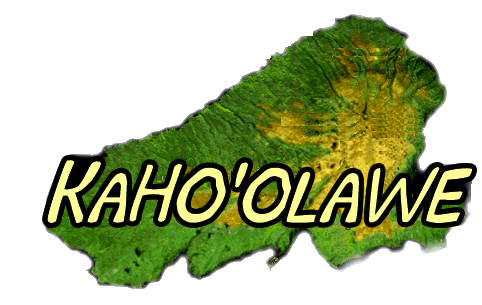
Home
Introduction to Kaho'olawe
PowerPoint
Introduction
Kaho'olawe Surveyor Software
Development Team
Role Cards
Key Elements for Reinhabiting
the Island
Presentation
Assessment
Related readings:
|
INTRODUCTION INTRODUCTION The Hawaiian island chain provides beautiful scenery and wide distribution of plants and animals. The larger islands (Hawaii, Oahu, Maui, Kaua`i, Moloka`i) are well-known; but less well known (although it is one of the eight major Hawaiian islands) is the island of Kaho`olawe, located off the southern coast of Maui. Kaho`olawe has a history that is intertwined with the rest of the Hawaiian island chain. It differs, however because of some unique geophysical and meteorological phenomena that have resulted in its not having enjoyed a significant population. However, this lack of population has placed Kaho`olawe in an interesting position. The island has been used over the years as a cultural and religious site, a penal colony, a ranch, and, until recently, a practice range for Naval bombing and gunnery. The island is 11 miles long and 7 miles wide, with an area of about 28,776 acres. The northern and western coasts of the island slope gently down to the ocean, while the southern and eastern coasts have sharp, steep cliffs. Its maximum height is about 1477 feet. The island is now largely arid, due largely to early plant growth and diminution by goats. Because of the cultural importance to the people of Hawaii, Kaho`olawe has undergone close scrutiny by several groups in an effort to return the island to its cultural primacy. This entails biological and physical remediation, seasoned with significant efforts to replace or preserve cultural and historical artifacts. To perform meaningful study, preservation, and remediation requires the use of some modern, computer-based technology. Key among these technologies are geographic information systems (GISs), which allow researchers and others to view detailed maps of the island. These maps include such information as contours (elevations), sites of water deposits, military installations, archaeological sites, cultural sites, sites of unexploded ordnance, locations of other human-made debris, and more. By careful use of these maps workers can help determine what sites require what amounts of remediation so that the planning and implementation process to restore (insofar as possible) Kaho`olawe to its place of cultural eminence is possible. |
